Wicked Good Education: National Marine Educators Come to Boston
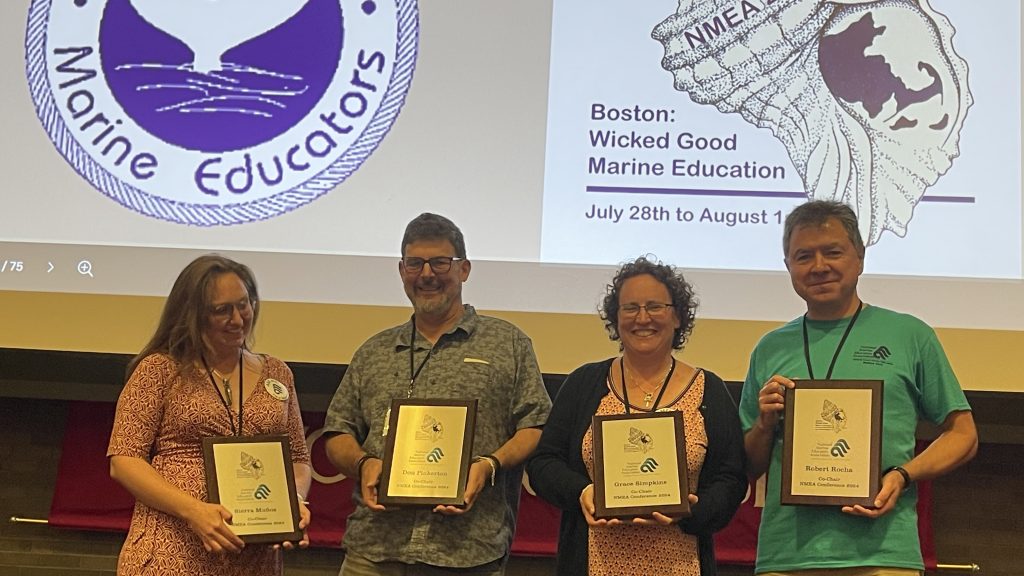
WHOI Sea Grant Education Specialist Grace Simpkins has had a busy year. When the National Marine Educators Association decided to hold its annual meeting in Boston in 2024, Grace and her colleagues on the board of the Massachusetts chapter sprang into action, planning the week-long meeting that brings together teachers and informal educators from across the U.S. and around the world for active learning, networking, and fun.
Held July 28 through August 1 at Boston University’s campus on historic Commonwealth Avenue in Boston, this year’s conference was a powerhouse of activity. In addition to Grace, the organizing committee included Sierra Muñoz from Northeastern University, Jim Cleere, a Boston public school teacher, and MME co-chairs Don Pinkerton and Bob Rocha.
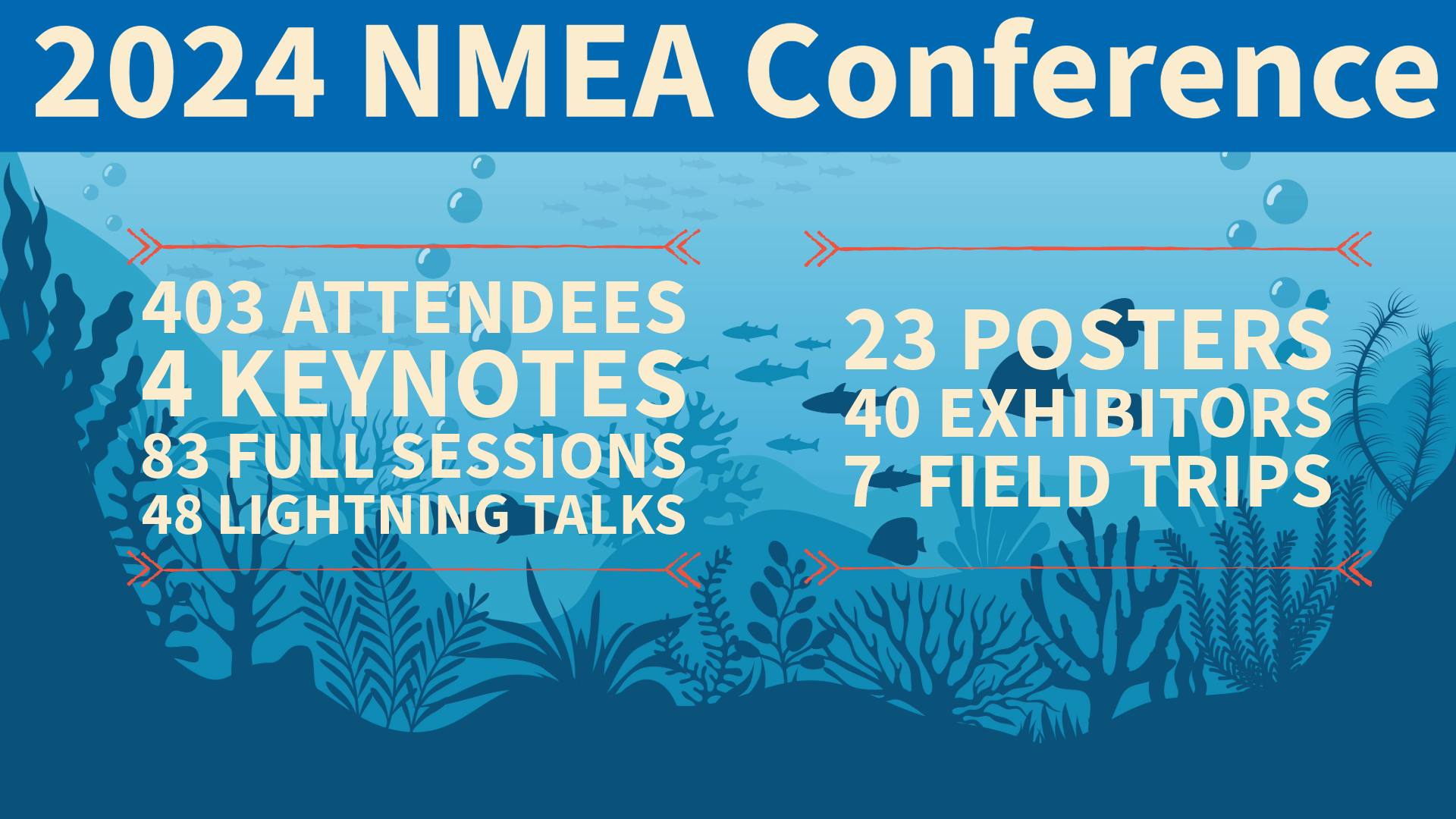
"This conference was a truly amazing opportunity to learn about advances in ocean/climate/great lakes literacy, best practices in the classroom and during experiential learning experiences, try out hands-on activities, and network with people across the world as passionate about marine education as I am," said Grace. "I met many amazing people, learned so many things, and was privileged to be part of planning team. It was a lot of work but so worth it!”
Highlighting WHOI
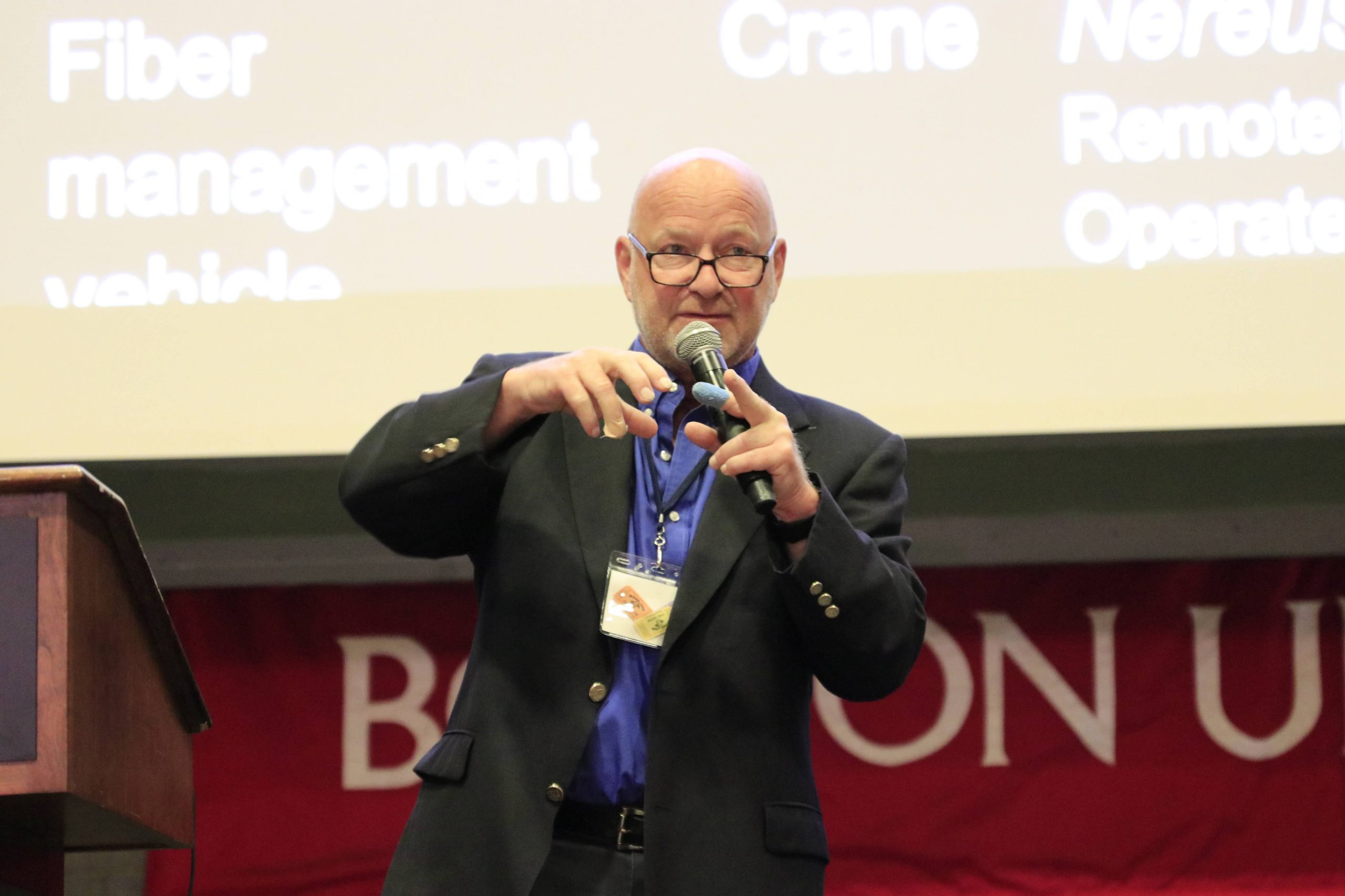
Thanks to Grace’s involvement, the meeting shined ample spotlight on the research, engineering, technology, and educational resources to be found at the Woods Hole Oceanographic Institution. The meeting kicked-off with WHOI biologist Tim Shank’s keynote, “Life in the Extreme: New Exploration and Research in Extreme Ocean Depths,” describing the research being conducted in the deep. Shank reports that the educators’ enthusiasm, camaraderie, and eagerness to learn was invigorating.
On Monday, WHOI’s Justin Ossolinski and Kayla Gardner joined author and educator Michelle Cusolito, and BU’s Erin Frates for a panel discussion about life on a research vessel. “Surrounded by Water: Life on a Research Vessel in the Middle of the Atlantic” gave educators an insider’s perspective on that experience.
At mid-week, WHOI’s Gretta Serres and Julie Huber presented on their inspirational work creating research opportunities at WHOI for community college students. And Grace participated in a talk on “Working Collaboratively Toward Equity, Access, and Belonging in Ocean Science” with NEOSEC (Northeast Ocean Science Education Collaborative) partners Aimee Bonanno UMass Boston and Diana Payne of Connecticut Sea Grant.
On the last full day of the meeting, attendees also had the opportunity to take a field trip to Cape Cod for tours of WHOI and Waquoit Bay National Estuarine Research Reserve.
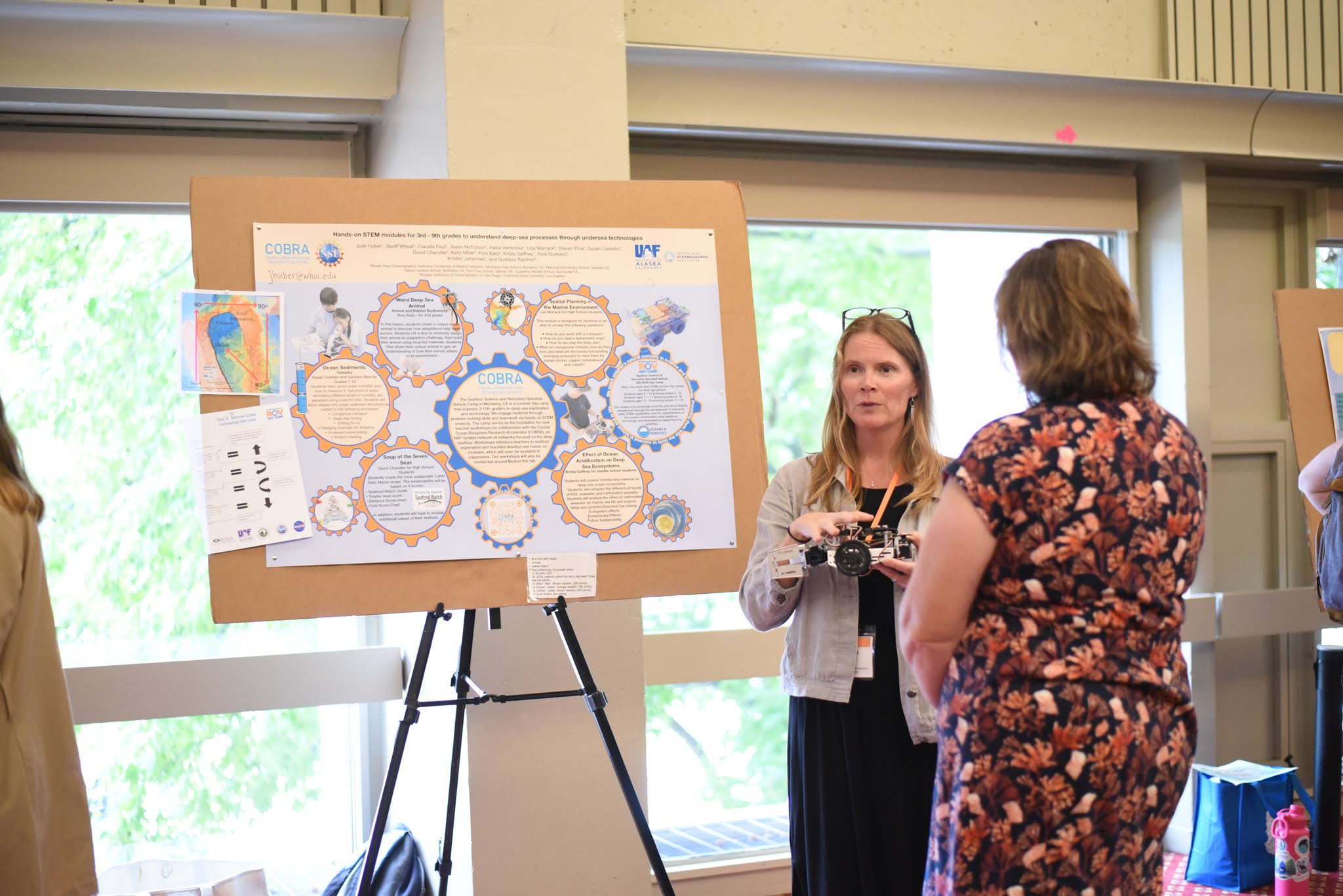
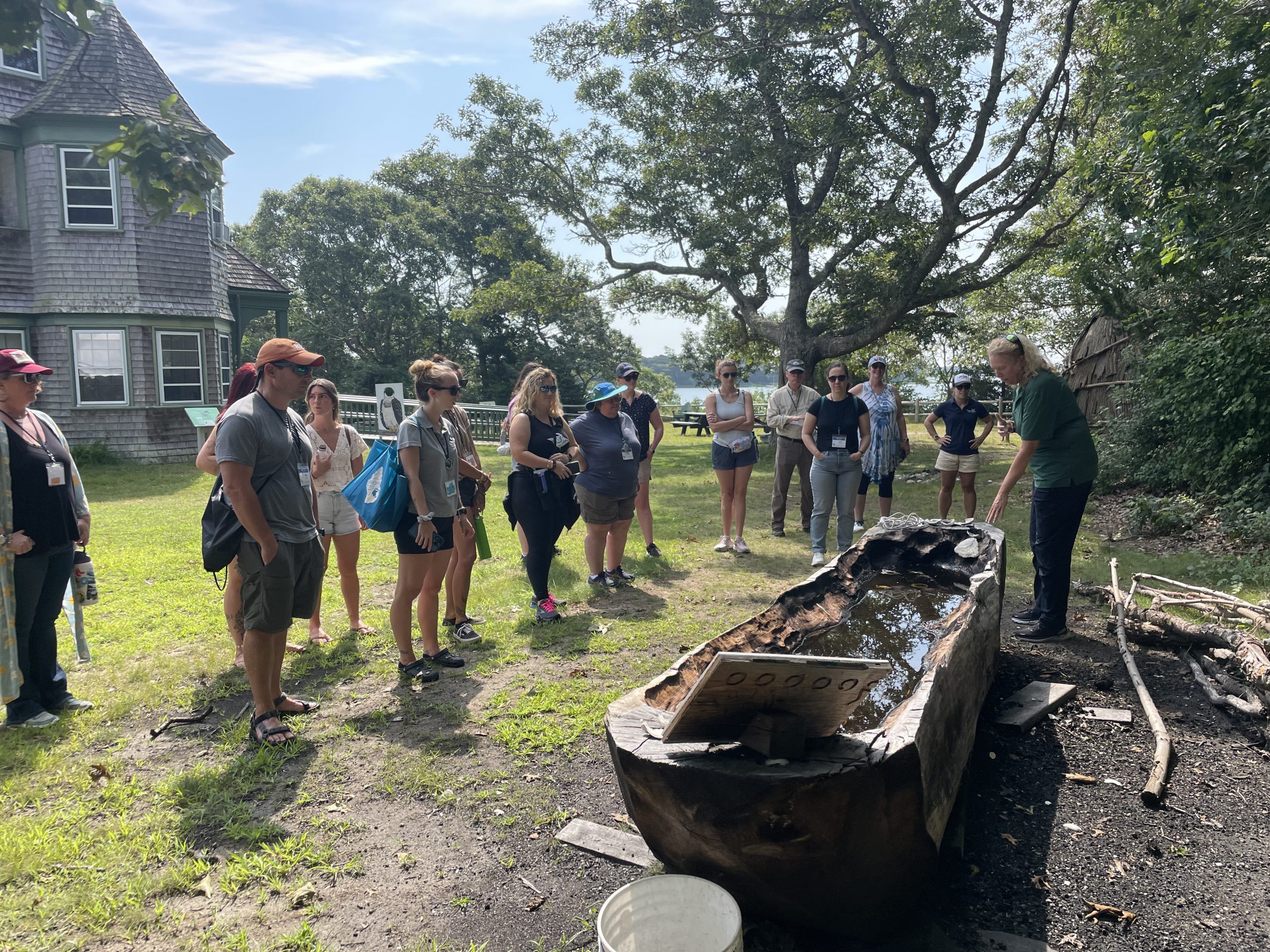
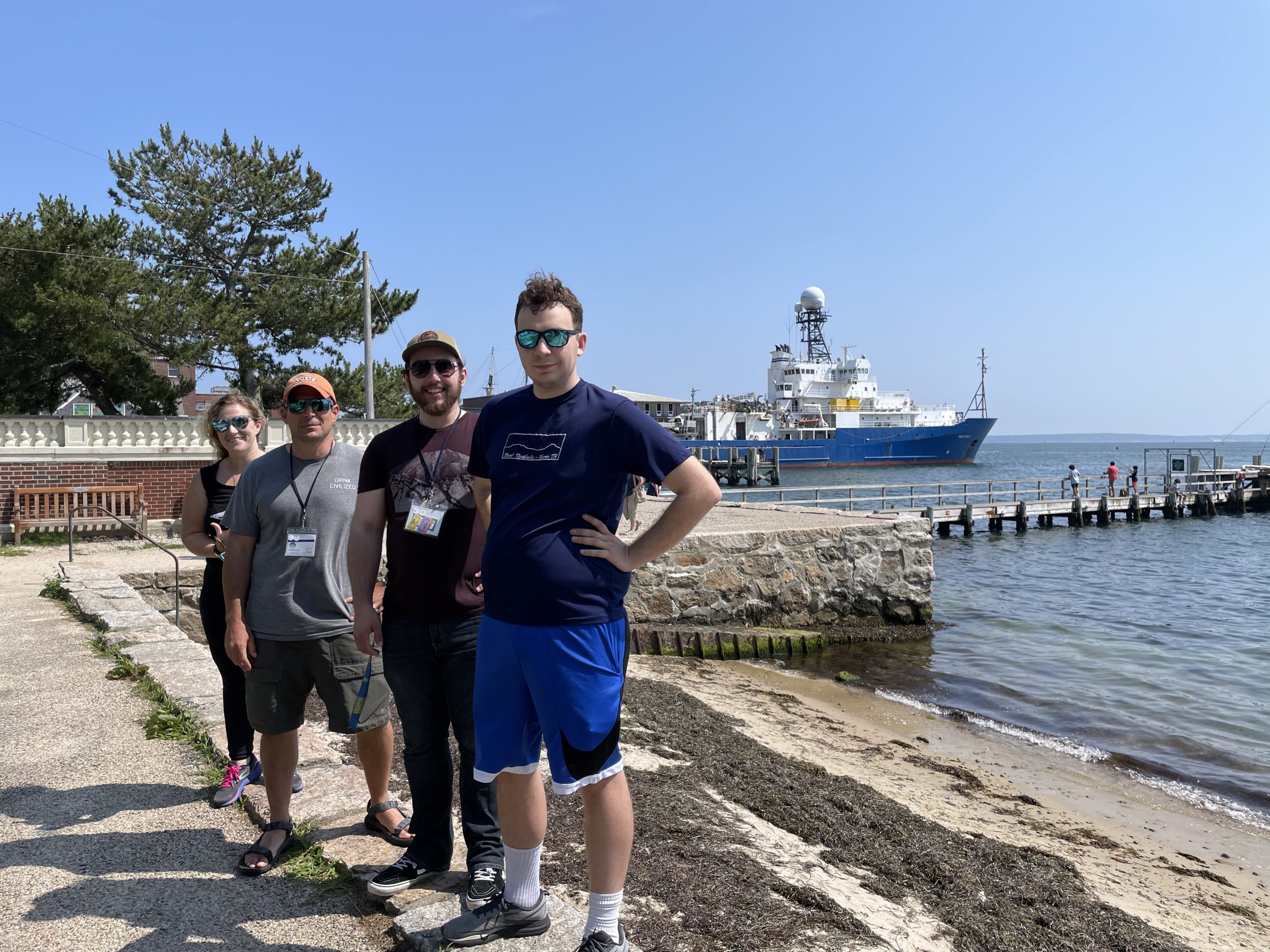
The Best of the Region
Throughout the week, there were talks about ocean and climate literacy, work on equity, access, and belonging, using art to communicate science, building resilient communities, evaluation, and more. Three other amazing keynote addresses included a presentation by Dr. Letise LaFeir Chief of Conservation and Stewardship at New England Aquarium, about the role of aquariums in conservation and stewardship.
Keynote speaker Elizabeth James-Perry, an Aquinnah Wampanoag educator, spoke to the educators about Connecting Ocean Life Forever: Wampanoag Perspectives on the Atlantic. James-Perry engages with Northeastern Woodlands cultural expressions primarily in shell-carving and Northeast wampum diplomacy, naturally dyed textiles and basketry and environmental restoration.
A final keynote by Terry Wolkowicz highlighted a project to inspire visually impaired students about the ocean using music and tactile sculptures. Wolkowicz is the education director for the New Bedford Symphony Orchestra and a founder of the nonprofit organization, Sound Explorations.
The chock-a-block meeting also featured exhibitors, poster sessions, a multitude of presentations including short “lightning” talks and longer in-depth sessions, and a range of field trip opportunities. Conference-goers were also treated to an evening event at the New England Aquarium, which included delicious food and a behind-the-scenes tour of the aquarium’s exhibits.
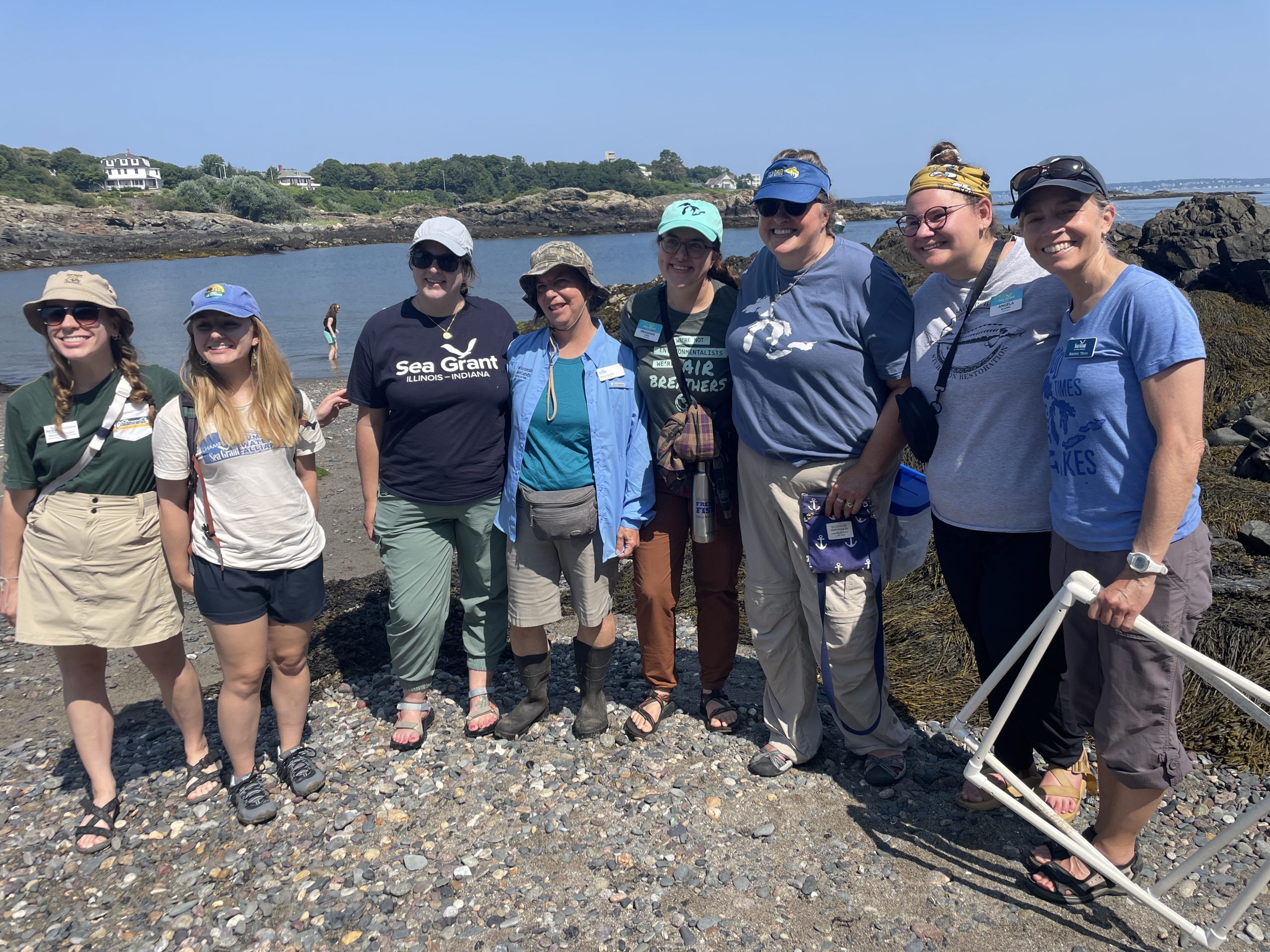
Sea Grant Educators at NMEA
The NMEA conference is also an opportunity for the network of Sea Grant educators to meet, coordinate, share resources and deepen bonds. “Before the start of the NMEA conference, we brought 40 or so Sea Grant educators and representatives from National Sea Grant and NOAA Education to Northeastern University’s Nahant Marine Station to learn about the educational programming there and then we went tide pooling,” said Grace, who helped organize the meeting. MIT Sea Grant hosted the afternoon business meeting.
